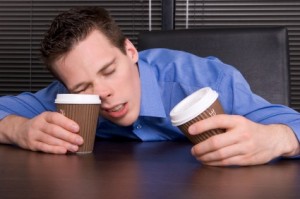Snoring is usually not something we are very concerned about, unless our sleep mate is causing a disruption to your sleep. But, did you know that frequent, loud snoring m
Snoring is usually not something we are very concerned about, unless our sleep mate is causing a disruption to your sleep. But, did you know that frequent, loud snoring m
Obstructive sleep apnea (OSA) is actually the most common type of sleep apnea. It occurs when the soft tissue in the back of your throat relaxes during sleep, causing a blockage of the airway (along with loud snoring). In turn this blocks the airflow into the lungs. Obstructive sleep apnea is defined as five or more episodes of apnea (temporary absence of breathing) or hypopnea (diminished depth and rate of breathing) per hour of sleep (called apnea-hypopnea index or AHI) in individuals who have excessive daytime sleepiness. Patients with 15 or more episodes of apnea or hypopnea per hour of sleep are considered to have moderate sleep apnea
Untreated sleep apnea prevents you from getting a good night’s sleep. The pausing of breathing literally shocks your body out of its natural sleep rhythms. As a result, you tend to spend more time in light sleep and less time in the deep, restorative sleep you need to be full of energy, mentally sharp, and productive the following day.
It can be difficult to diagnose sleep apnea without help, since most symptoms only occur when you are sleeping. So it’s advisable to ask a bed partner or record yourself while sleeping. Not everyone who snores has sleep apnea and vice versa. Some recent studies have also found that if you have snoring and grind your teeth than you likely have some form of apnea, so you should get checked by a physician. So how do you tell the difference between common snoring and a more serious case of sleep apnea? The biggest sign is how you feel during the day. The quality of your sleep is unaffected by “normal” snoring as much as sleep apnea does. So you would be less likely to suffer from sleepiness and fatigue during the day.
So where does the dentist come in? An official diagnosis of sleep apnea must come from a physician with the possibility of sleep center visit. A dentist can fabricate an Oral appliance which are used to reposition the tongue and lower jaw forward during sleep to maintain the open airway. Usually, oral appliances are recommended for mild to moderate Sleep Apnea patients, but can be used in severe sleep apnea patients who cannot tolerate CPAP machines (The standard treatment right now is use of a CPAP (Continuous Positive Airway Pressure) machine, but 25%-50% of sleep apnea patients do not follow thru with or tolerate CPAP machines). Some recent studies have shown these oral appliances to be the most effective in treating snoring and mild to moderate obstructive sleep apnea.
At Dr. Perrone’s office, we use an oral appliance called a TAP appliance (Thornton Adjustable Positioner). The TAP holds the lower jaw in a forward position so that it does not fall open during the night and cause the airway to collapse. It is able to maintain a clear airway to reduce snoring and improve breathing. We feel this gives the patient the best option for success.
The unique design allows the patient to fine-tune his/her treatment at home and work with the dentist to achieve the best possible results. Patients are empowered to manage the degree of lower jaw protrusion over as many nights as it takes to achieve the optimal treatment position. The TAP has a single point of central adjustment, which prevents uneven bilateral adjustment that can create an irregular bite and discomfort.
The TAP has over a 95% success rate. It is the key to a snore-free, restful night of sleep. This appliance also treats sleep apnea without the need for surgery, a mask, or medication. The TAP is recognized as the market leader in oral appliances for snoring and sleep apnea and is currently prescribed by over 7,000 dentists worldwide to treat snoring and sleep apnea. In addition, it is the most researched oral appliances on the market with over 30 independent peer reviewed published studies. A simple dental examination is necessary to know if the patient will be able to use an oral appliance. So, schedule one today for you and your loved ones!